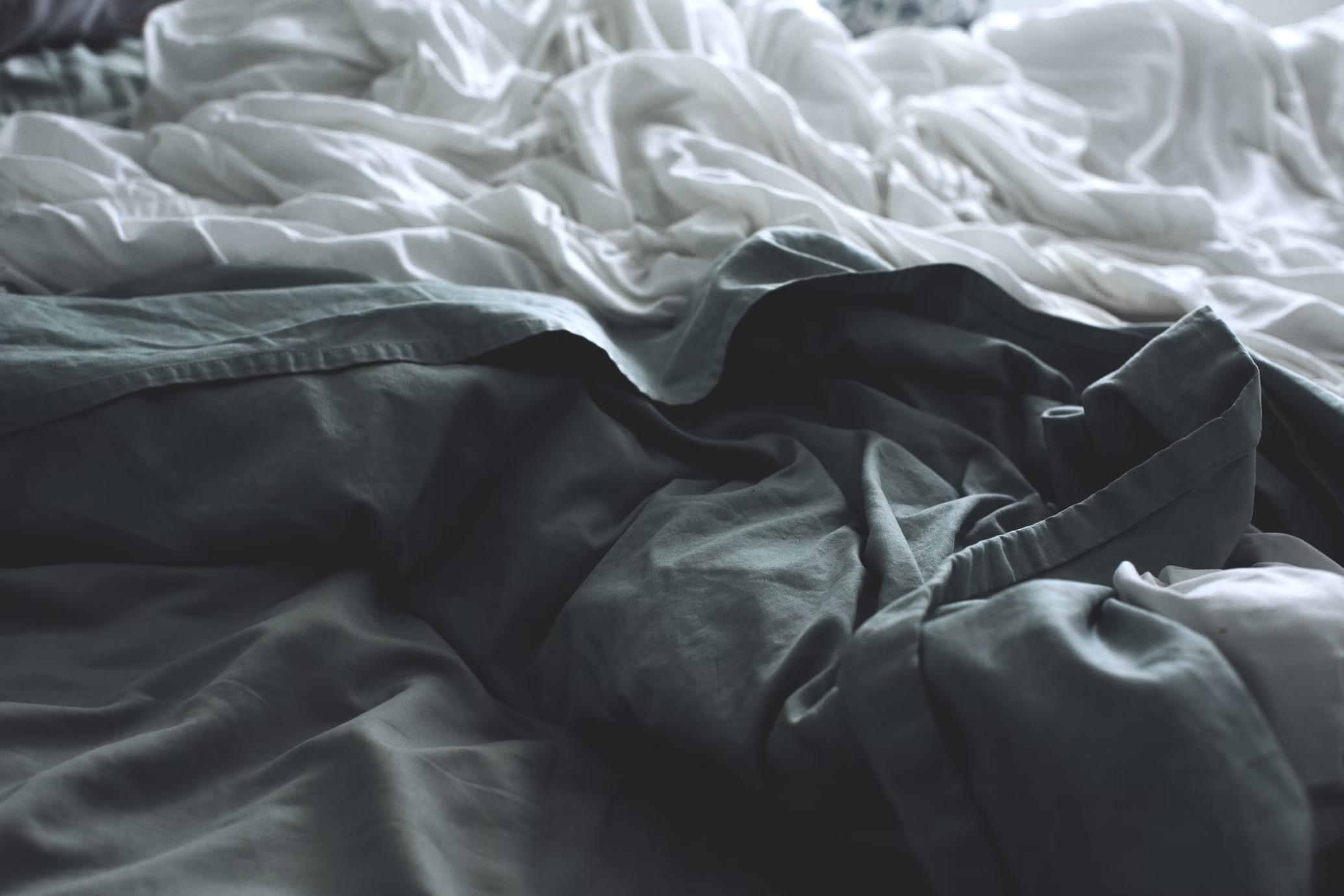HSN Code & Bed Sheet GST Rate in India
- 18 Aug 24
- 13 mins

HSN Code & Bed Sheet GST Rate in India
Key Takeaways
- Tiered Taxation System for Children's Wear: The GST implements a tiered taxation system for children's wear, with a lower rate of 5% for items priced below INR 1000 and a higher rate of 12% for those priced above. This structure aims to make essential clothing more affordable for the general population.
- Exemptions for Traditional Textiles: GST offers exemptions and lower rates for traditional textile products, such as handloom and handicraft items. These measures support the survival and growth of indigenous crafts and small industries, which are vital to the cultural and economic fabric of India.
- Role of HSN Codes: HSN codes are crucial for categorizing textile products under the GST system, ensuring that the correct tax rates are applied uniformly across different products and regions. This systematization helps streamline the tax process, reduce confusion, and ensure compliance.
- Uniform GST Rate for Synthetic Fabrics: Synthetic fabrics, much like their natural counterparts, are generally taxed at 5%. This uniformity simplifies the tax regime for businesses dealing in various types of fabrics, aiding in clearer pricing and accounting practices.
The Goods and Services Tax (GST) is a pivotal part of India's tax structure, significantly impacting various sectors, including the textile industry. This article explains into the specifics of GST rates applicable to different textile articles such as bed linen, toilet linen, and other related products. Understanding these can aid businesses and consumers in navigating the complexities of GST compliance.
GST rates and HSN Code for Bed linen and table linen

The Harmonized System of Nomenclature (HSN) code for bed linen is crucial for tax categorization. Bed linen typically falls under HSN code 6302, which helps in the accurate application of GST rates during transactions.
This HSN code primarily pertains to various types of linens, such as bed linen, toilet linen, and kitchen linen Table linen.
| HSN Code | Description | Rate (%) | CESS (%) | Effective Date | Rate Revision |
|---|---|---|---|---|---|
| 6302 | Bed Linen, Table Linen, Toilet Linen and Kitchen Linen | 5/12 | 0 | 15/11/2017 | 5% to 12% |
| 630210 | Bed Linen, Knitted or Crocheted | 5/12 | 0 | 15/11/2017 | 5% to 12% |
| 63021010 | Bed Linen, Knitted or Crocheted: Of Cotton | 5/12 | 0 | 15/11/2017 | 5% to 12% |
| 63021090 | Bed Linen, Knitted or Crocheted: Other | 5/12 | 0 | 15/11/2017 | 5% to 12% |
| 630221 | Of Cotton | 5/12 | 0 | 15/11/2017 | 5% to 12% |
| 63022110 | Bed Linen, Table Linen, Toilet Linen and Kitchen Linen—of Cotton—of Handloom | 5/12 | 0 | 15/11/2017 | 5% to 12% |
| 63022190 | Bed Linen, Table Linen, Toilet Linen and Kitchen Linen—of Cotton—and Other | 5/12 | 0 | 15/11/2017 | 5% to 12% |
| 63022200 | Bed Linen, Table Linen, Toilet Linen and Kitchen Linen Other Bed Linen, Printed: Of Man-Made Fibres | 5/12 | 0 | 15/11/2017 | 5% to 12% |
| 63022900 | Bed Linen, Table Linen, Toilet Linen and Kitchen Linen Other Bed Linen, Printed: Of Other Textile Materials | 5/12 | 0 | 15/11/2017 | 5% to 12% |
| 63023100 | Bed Linen, Table Linen, Toilet Linen and Kitchen Linen Other Bed Linen: Of Cotton | 5/12 | 0 | 15/11/2017 | 5% to 12% |
| 63023200 | Bed Linen, Table Linen, Toilet Linen and Kitchen Linen Other Bed Linen: Of Man-Made Fibers | 5/12 | 0 | 15/11/2017 | 5% to 12% |
| 63023900 | Bed Linen, Table Linen, Toilet Linen and Kitchen Linen Other Bed Linen: Of Other Textile Materials | 5/12 | 0 | 15/11/2017 | 5% to 12% |
| 630240 | Table Linen, Knitted or Crocheted | 5/12 | 0 | 15/11/2017 | 5% to 12% |
| 63024010 | Table Linen, Knitted or Crocheted: Of Silk | 5/12 | 0 | 15/11/2017 | 5% to 12% |
| 63024020 | Table Linen, Knitted or Crocheted: Of Wool or Fine Animal Hair | 5/12 | 0 | 15/11/2017 | 5% to 12% |
| 63024030 | Table Linen, Knitted or Crocheted: Of Cotton | 5/12 | 0 | 15/11/2017 | 5% to 12% |
| 63024040 | Table Linen, Knitted or Crocheted: Of Man-Made Fibres | 5/12 | 0 | 15/11/2017 | 5% to 12% |
| 63024090 | Table Linen, Knitted or Crocheted: Other | 5/12 | 0 | 15/11/2017 | 5% to 12% |
| 630251 | Of Cotton | 5/12 | 0 | 15/11/2017 | 5% to 12% |
| 63025110 | Other Table Linen: Cotton or Handloom | 5/12 | 0 | 15/11/2017 | 5% to 12% |
| 63025190 | Other Table Linen - Of Cotton - Other | 5/12 | 0 | 15/11/2017 | 5% to 12% |
| 63025200 | Bed Linen, Table Linen, Toilet Linen And Kitchen Linen Other Table Linen: Of Flax | 5/12 | 0 | 15/11/2017 | 5% to 12% |
| 63025300 | Bed Linen, Table Linen, Toilet Linen And Kitchen Linen Other Table Linen: Of Man-Made Fibres | 5/12 | 0 | 15/11/2017 | 5% to 12% |
| 63025900 | Bed Linen, Table Linen, Toilet Linen And Kitchen Linen Other Table Linen: Of Other Textile Materials | 5/12 | 0 | 15/11/2017 | 5% to 12% |
GST rates and HSN code for Curtains
Here is a detailed tabular format outlining the HSN codes, descriptions, GST rates, cess, effective dates, and rate revisions for curtains and related interior blinds, including both knitted/crocheted and other textile materials:
| HSN Code | Description | Rate (%) | CESS (%) | Effective Date | Rate Revision |
|---|---|---|---|---|---|
| 6303 | Curtains (Including Drapes) And Interior Blinds; Curtain Or Bed Valances - Knitted Or Crocheted | 5/12 | 0 | 15/11/2017 | 5% to 12% |
| 63031100 | Curtains (Including Drapes) And Interior Blinds; Curtain Or Bed Valances Knitted Or Crocheted: Of Cotton | 5/12 | 0 | 15/11/2017 | 5% to 12% |
| 63031200 | Curtains (Including Drapes) And Interior Blinds; Curtain Or Bed Valances Knitted Or Crocheted: Of Synthetic Fibres | 5/12 | 0 | 15/11/2017 | 5% to 12% |
| 63031900 | Curtains (Including Drapes) And Interior Blinds; Curtain Or Bed Valances Knitted Or Crocheted: Of Other Textile Materials | 5/12 | 0 | 15/11/2017 | 5% to 12% |
| 63039100 | Curtains (Including Drapes) And Interior Blinds; Curtain Or Bed Valances Other: Of Cotton | 5/12 | 0 | 15/11/2017 | 5% to 12% |
| 63039200 | Curtains (Including Drapes) And Interior Blinds; Curtain Or Bed Valances Other: Of Synthetic Fibres | 5/12 | 0 | 15/11/2017 | 5% to 12% |
| 630399 | Of Other Textile Materials | 5/12 | 0 | 15/11/2017 | 5% to 12% |
| 63039910 | Curtains (Including Drapes) And Interior Blinds; Curtain Or Bed Valances Other: Of Other Textile Materials: Silk Shower Curtains | 5/12 | 0 | 15/11/2017 | 5% to 12% |
| 63039990 | Curtains (Including Drapes) And Interior Blinds; Curtain Or Bed Valances Other: Of Other Textile Materials: Other | 5/12 | 0 | 15/11/2017 | 5% to 12% |
This table provides comprehensive information on the various types of curtains and their corresponding GST rates and HSN codes, which are vital for businesses in the textile and interior design industries to comply with tax regulations.
GST Rates for Other Textiles

Below is a detailed table including GST rates for a variety of textiles . This table is structured to facilitate easy identification of each product type with their respective HSN codes, GST rates, and keywords to help in searches related to these items.
This table is designed to provide quick access to key information about GST rates for various textile articles, using specific keywords for easy reference in searches and compliance documentation. It covers a broad range of textile products to assist businesses and consumers in identifying applicable taxes for diverse textile goods.
GST Rate for Apparel and Clothing Accessories
Here's a detailed table showing the GST rates for apparel and clothing accessories, including worn articles and various types of leather materials, each described with relevant keywords to aid in understanding and searches:
| HSN Code | Description | GST Rate (%) | Keywords |
|---|---|---|---|
| 6109 | T-shirts, singlets, and other vests, knitted or crocheted | 5/12 | Casual wear, cotton, synthetic |
| 6110 | Sweaters, pullovers, sweatshirts, knitted or crocheted | 5/12 | Winter wear, wool, acrylic |
| 6203 | Men's suits, jackets, and trousers, not knitted | 12 | Formal wear, office clothing |
| 6204 | Women's suits, dresses, skirts, not knitted | 12 | Women’s fashion, formal |
| 6309 | Worn clothing and other worn articles | 5/12 | Second-hand, recycled apparel |
| 4203 | Articles of apparel made of leather | 18 | Leather jackets, belts, accessories |
| 4205 | Other articles of leather or composition leather | 18 | Leather crafts, small items |
| 4303 | Articles of apparel made of fur | 18 | Fur coats, luxury wear |
This table includes essential details for various types of clothing and clothing accessories, indicating the GST rates based on current tax guidelines in India. Keywords included help in identifying the type of apparel, its material, and usage, which can be particularly useful for businesses in inventory management and sales categorization.
Leather and Composition Leather Products GST Rate
Below is a table detailing GST rates for leather and composition leather products, dress patterns, and related articles, including keywords for easier identification and search optimization:
| HSN Code | Description | GST Rate (%) | Keywords |
|---|---|---|---|
| 4203 | Articles of apparel and clothing accessories made of leather | 18 | Leather jackets, belts, accessories |
| 4205 | Other articles of leather or composition leather | 18 | Leather handbags, wallets, cases |
| 4115 | Composition leather with a basis of leather or leather fiber | 18 | Composition leather, synthetic leather |
| 4114 | Parchment-dressed leather | 18 | Parchment leather, soft leather |
| 4113 | Leather further prepared after tanning or crusting, including parchment-dressed leather | 18 | Treated leather, finished leather |
| 4202 | Travel goods, handbags and similar containers made of leather | 18 | Leather luggage, fashion accessories |
| 6403 | Footwear with outer soles of rubber, plastics, leather or composition leather and uppers of leather | 18 | Leather shoes, boots |
| 4806 | Vegetable parchment, greaseproof papers, tracing papers and glassine and other glazed transparent or translucent papers | 18 | Crafting papers, specialty papers |
| 9401 | Seats of a kind used for motor vehicles, of leather | 28 | Car seats, leather upholstery |
| 4201 | Saddlery and harness for any animal, of any material | 18 | Equestrian gear, leather saddles |
| 5007 | Woven fabrics of silk or silk waste | 5/12 | Silk garments, luxury textiles |
| 5208 | Cotton woven fabrics | 5/12 | Cotton dress patterns, fabric arts |
| 5907 | Textile fabrics otherwise impregnated, coated or covered; painted canvas being theatrical scenery, studio back-cloths or the like | 12 | Artistic textiles, stage cloths |
| 9619 | Sanitary towels, tampons, napkins and napkin liners for babies and similar sanitary articles, of any material | 12 | Hygiene products, disposable textiles |
These entries outline the diverse range of leather products, their descriptions, applicable GST rates, and key terms to enhance searchability and comprehension for various stakeholders in the industry, from manufacturers and retailers to consumers looking to understand tax implications.
Footwear GST Rate

Here's a detailed table outlining GST rates for footwear, including those made from patent leather, along with other related textile and material categories. The table includes keywords to aid in searches and understanding for stakeholders in these industries:
| HSN Code | Description | GST Rate (%) | Keywords |
|---|---|---|---|
| 6402 | Footwear having a retail sale price not exceeding Rs. 1000 per pair | 5 | Affordable footwear, mass market shoes |
| 6403 | Footwear with outer soles and uppers of leather | 18 | Leather shoes, high-end footwear, patent leather |
| 6404 | Footwear with outer soles of rubber, plastics, leather or composition leather and uppers of materials other than leather or textile | 18 | Sports shoes, casual footwear |
| 6405 | Other footwear, including boots, ankle-boots, and similar footwear which cover the ankle | 18 | Boots, specialized footwear, outdoor shoes |
| 4113 | Leather further prepared after tanning or crusting, including laminated leather | 18 | Processed leather, luxury products |
| 4114 | Patent leather and patent laminated leather; metallized leather | 18 | Shiny leather, fashion accessories, metallic leather |
| 4205 | Articles of leather or composition leather used in machinery or mechanical appliances | 18 | Industrial leather goods, technical applications |
| 4303 | Articles of apparel made from fur, including laminated fur | 18 | Fur clothing, luxury wear, and warm clothing |
| 5605 | Metallized yarn, whether or not gimped, being textile yarn, strip or the like of headings 5404 or 5405, combined with metal | 12 | Decorative textiles, embroidery, and crafts |
| 5902 | Tyre cord fabric of high tenacity yarn of nylon or other polyamides, polyesters or viscose rayon | 18 | Automotive textiles, high strength fabrics |
| 9003 | Frames and mountings for spectacles, goggles, or the like, and parts thereof | 18 | Eyewear accessories, fashion frames |
This table provides an overview of GST rates for various types of footwear, including those made from patent and metallised leather, as well as other associated products. It helps businesses and consumers understand the tax implications and assists in categorizing products for inventory and sales. The keywords included facilitate better understanding and searchability within industry contexts.
World of Manufacturing
In the diverse world of manufacturing, leather fibre, often sourced from bovine animals, forms a crucial component of high-quality fashion and automotive accessories, blending seamlessly with materials like laminated wood, tropical wood, and innovative cellulose wadding, enhancing the durability and aesthetic appeal of products ranging from luxury footwear to stylish car interiors."
Impact of GST on the Textile Industry
The implementation of the Goods and Services Tax (GST) in India has had a significant impact on various sectors, including the textile industry, which is one of the country's oldest and most vital industries. Here’s an overview of how GST has influenced the textile sector:
- Simplification of Tax Structure
Prior to GST, the textile industry was burdened with numerous indirect taxes such as excise, VAT, and CST, which were levied at different stages of supply. GST consolidated these taxes into a single tax, simplifying the tax structure and making it easier for business owners to comply. This simplification has helped in reducing the overall administrative burden and improving operational efficiency.
- Increased Compliance Costs
While GST has streamlined tax processes, it has also led to increased compliance costs, especially for small and medium-sized enterprises (SMEs). The need to maintain detailed records and file multiple returns each month has increased the operational costs for these businesses, which often lack the resources to manage these requirements efficiently.
- Impact on Working Capital
GST is levied on a transaction basis, which means that taxes are applicable on the stock transfer between states. This has increased the working capital requirement for manufacturers and wholesalers who operate on thin margins, as they now need to pay tax upfront for transfers that might not immediately result in revenue.
- Price Adjustments
The varying GST rates on different textile products (ranging from 5% to 18%) have led to adjustments in pricing strategies by businesses. Products such as synthetic fibers and man-made fibers attract a higher GST rate compared to cotton, which impacts the cost structure of these products and consequently their pricing in the market.
- Boost to Organized Sector
GST has brought more transparency to the industry with its structured input tax credit mechanism, which encourages transactions through formal channels. This shift benefits the organized sector and reduces the competitive advantages previously enjoyed by the unorganized sector, promoting a more level playing field.
- Export Challenges
GST has posed challenges for exporters in the textile industry due to the initial blockage of funds under input tax credits. Although the government has taken steps to address these issues by introducing schemes for quicker refunds, the initial months saw significant cash flow constraints for exporters.
- Technological Upgradation
Adapting to GST requirements has necessitated technological upgrades for many firms in the textile industry. The adoption of IT systems for compliance has inadvertently led to better inventory management and data-driven decision-making, which are positive offshoots of this transition.
- Sectoral Growth
In the long term, GST is expected to benefit the textile industry by creating a more unified national market and reducing the cost of manufacturing through a seamless flow of input tax credits. This can lead to enhanced production efficiency and potential growth in the sector.
Conclusion
GST rates for various textile products are essential for proper pricing, compliance, and financial planning. The textile industry, being vast and varied, benefits from a structured approach to taxation, which can help stabilize the market and encourage fair trade practices.
💡Facing delays in GST payment? Get started with PICE today and streamline your GST payments. Click here to sign up and take the first step towards hassle-free GST management.
 By
By 

















